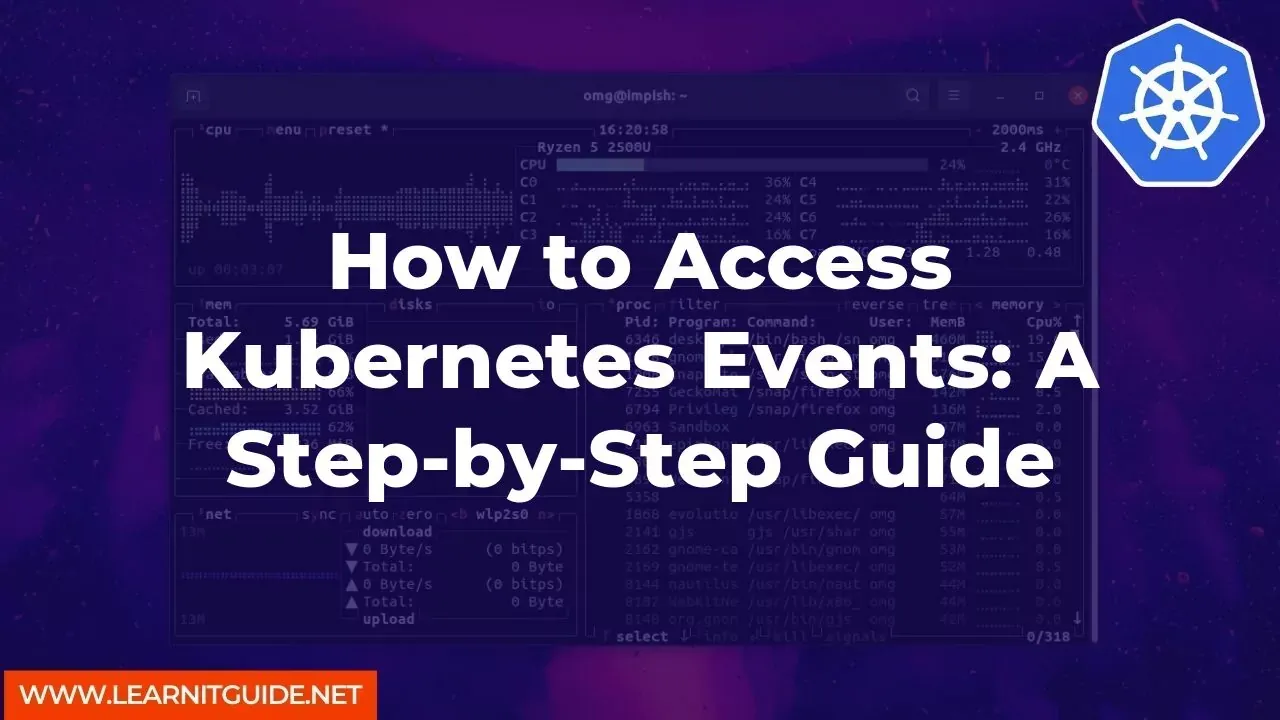Kubernetes is an open-source container orchestration platform that allows you to manage and deploy your containerized applications at scale. As your Kubernetes environment grows, it can become challenging to keep track of what is happening within your cluster. Kubernetes events provide a mechanism for monitoring the state of your cluster and the activities of its components.
In this article, we will show you how to access Kubernetes events and how to use them to troubleshoot issues and gain insight into your cluster's behavior.
Step 1: Verify kubectl Configuration
Before accessing Kubernetes events, you need to ensure that your kubectl configuration is correct. To verify your kubectl configuration, run the following command:
kubectl config view
This command will display the current kubectl configuration file, which is typically located at ~/.kube/config. Ensure that the configuration file contains the correct context, user, and cluster information.
Step 2: View Kubernetes Events
To view Kubernetes events, you can use the kubectl get events command. This command displays a list of events that have occurred in your cluster. By default, events are sorted by the timestamp of the most recent occurrence. To view events from all namespaces, run the following command:
kubectl get events --all-namespaces
This command will display all the events that have occurred in your cluster, including events from all namespaces.
Step 3: Filter Kubernetes Events
If you want to filter Kubernetes events based on specific criteria, you can use the kubectl get events command with the --field-selector flag. The --field-selector flag allows you to filter events based on different fields, such as involvedObject.kind, involvedObject.name, reason, type, source.component, and source.host.
For example, to view events related to the nginx pod, run the following command:
kubectl get events --field-selector involvedObject.kind=Pod,involvedObject.name=nginx
This command will display all events related to the nginx pod.
Step 4: Watch Kubernetes Events in Real-Time
If you want to watch Kubernetes events in real-time, you can use the kubectl get events command with the --watch flag. The --watch flag allows you to watch events as they occur in your cluster.
For example, to watch events in the default namespace, run the following command:
kubectl get events -n default --watch
This command will display all events that occur in the default namespace in real-time.
Step 5: Export Kubernetes Events
If you want to export Kubernetes events to a file, you can use the kubectl get events command with the --output flag. The --output flag allows you to specify the output format of the events, such as json or yaml.
For example, to export events to a file named events.json, run the following command:
kubectl get events --all-namespaces --output=json > events.json
This command will export all events to a JSON file named events.json.
Kubernetes events provide a powerful mechanism for monitoring the state of your cluster and the activities of its components. By accessing and analyzing Kubernetes events, you can troubleshoot issues, gain insight into your cluster's behavior, and optimize its performance.
In this article, we have shown you how to access Kubernetes events and how to use them to gain valuable insights into your Kubernetes environment. We hope this guide has been helpful to you.
Related Searches and Questions asked:
That's it for this post. Keep practicing and have fun. Leave your comments if any.








0 Comments